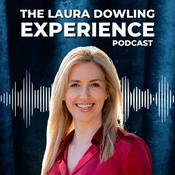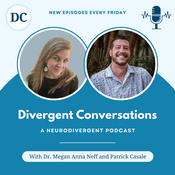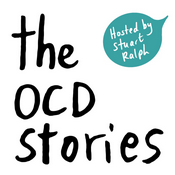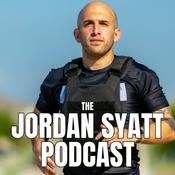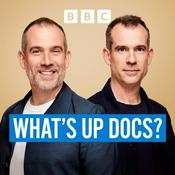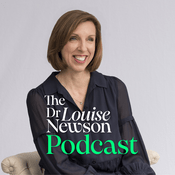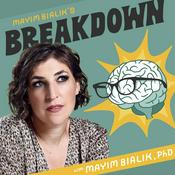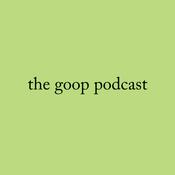Available Episodes
5 of 107
- COVID-19 and the Impact of Cryopreservation on Hematopoietic Cell GraftsIn this episode of The Onco’Zine Brief Peter Hofland talks with Stephen Spellman. Stephen Spellman is Vice President and Senior Scientific Director at Be The Match and the Center for International Blood & Marrow Transplant Research (CIBMTR). Hofland and Spellman talk about the outcomes of a study published in Blood Advances, the journal of the American Society of Hematology. [1] The article discusses the impact of cryopreservation of hematopoietic cell grafts on overall survival (OS) and other outcomes within 1 year after hematopoietic cell transplantation. At the beginning of the COVID-19 pandemic the National Marrow Donor Program as together with other national and international donor registries mandated the cryopreservation of hematopoietic cell grafts during the first 6 months of the pandemic because of patient and donor safety concerns. The reason was that during the early days of the pandemic, delivery of donor products after patient conditioning could not be guaranteed. This was, in part, caused by logistical complexities including travel bans, flight delays and cancellations, rerouting of couriers – as well as closed border crossings… In addition, donors were at risk of being infected with the SARS CoV-2 Virus, the virus that causes COVID-19, which, in turn, resulted in last-minute cancellations of graft collection. To solve the pandemic-related logistical problems, the authors of the study conclude that cryopreservation should be considered a method to eliminate the potential risks with the use of fresh donor graft products or when fresh grafts are not available.But what was the impact of cryopreservation on patients receiving hematopoietic cell transplantation compared to the effects among patients receiving fresh donor products? Was there a difference in overall survival, disease free survival, or disease recurrence? Was there a risk in Graft vs Host Disease? In this episode of The Onco’Zine Brief Hofland and Spellman talk about this and more.Reference[1] Devine SM, Bo-Subait S, Kuxhausen M, Spellman SR, Bupp C, Ahn KW, Stefanski HE, Auletta JJ, Logan BR, Shaw BE. Clinical impact of cryopreservation of allogeneic hematopoietic cell grafts during the onset of the COVID-19 pandemic. Blood Adv. 2023 Oct 10;7(19):5982-5993. doi: 10.1182/bloodadvances.2023009786. PMID: 37036959; PMCID: PMC10580174. [Article][Pubmed]About The Onco'Zine BriefThe Onco’Zine Brief is developed in collaboration with our online journal Onco’Zine, where you can find additional information and the latest news about cancer diagnosis and treatment, and cancer prevention.The Onco'Zine Brief is distributed in the United States via PRX (Public Radio Exchange). In the United Kingdom and Europe, the program is distributed via UK Health Radio (UKHR). And the program can be downloaded via most podcasts and streaming media services, including iTunes, Spotify, TuneIn, and iHeart Radio.For more information about The Onco'Zine Brief or how to sponsor or support this public radio broadcast and podcast, visit to download our Media Kit, visit our Patreon page, or contact the sales team.To sign up for The Onco'Zine Newsletter (open for residents of the United States only), text the word CANCER to 66866.Support for The Onco’Zine Brief comes from the Oncology Directory and from listeners like you. Funding is also provided by Java Original Coffee and RoastMasterz.Become a supporter of this podcast: https://www.spreaker.com/podcast/the-onco-zine-brief--2786156/support.--------45:58
- SonALAsense: Developing a Safe and Effective Noninvasive Treatment for Cancer.In a new episode of The Onco’Zine Brief, Peter Hofland talks with Ely Benaim, MD, the Chief Medical Officer and Executive Vice President Development at SonALAsense and Mark De Souza, Ph.D, President and Chief Executive Officer of SonALAsense.SonALAsense was founded to create hope in the face of despair with Sonodynamic Therapy (SDT), a non-invasive therapy option using SONALA-001 in combination with Insightec’s MR-guided focused ultrasound (MRgFUS) to treat and eradicate deadly cancers like High-Grade Gliomas (HGG) that typically require debilitating brain surgery that often leads to tumor recurrence.SonALAsense’s SDT uses SONALA-001, a proprietary formulation of aminolevulinic acid (ALA), to disrupt heme metabolism in tumor cells, increasing production of protoporphyrin, a heme precursor. From there, energy from focused ultrasound excites protoporphyrin molecules, which produce reactive oxygen species that destroy cancer cells.Recently, Hasan Syed, MD, at Children’s National Hospital published a peer-reviewed paper on the first DIPG patient treated with SONALA-001 in the Journal of Neuro-Oncology; a major milestone for this deadly and understudied childhood disease. [1]Hofland, Benaim and De Souza talk about new technologies in the treatment of difficult to treat cancers.Reference[1] Syed HR, Kilburn L, Fonseca A, Nazarian J, Oluigbo C, Myseros JS, Packer RJ, Keating RF. First-in-human sonodynamic therapy with ALA for pediatric diffuse intrinsic pontine glioma: a phase 1/2 study using low-intensity focused ultrasound : Technical communication. J Neurooncol. 2023 Apr;162(2):449-451. doi: 10.1007/s11060-023-04269-8. Epub 2023 Apr 12. PMID: 37046110.About The Onco'Zine BriefThe Onco'Zine Brief is distributed in the United States via PRX (Public Radio Exchange). In the United Kingdom and Europe, the program is distributed via UK Health Radio (UKHR). And the program can be downloaded via most podcasts and streaming media services, including iTunes, Spotify, TuneIn, and iHeart Radio.For more information about The Onco'Zine Brief or how to sponsor or support this public radio broadcast and podcast, visit to download our Media Kit, visit our Patreon page, or contact the sales team.To sign up for The Onco'Zine Newsletter (open for residents of the United States only), text the word CANCER to 66866.The Onco’Zine Brief is made possible, in part, by Java Original Coffee and Roastmasterz by Java Original Coffee.Become a supporter of this podcast: https://www.spreaker.com/podcast/the-onco-zine-brief--2786156/support.--------48:56
- Be The Match®: Improving Outcomes and Providing Hope to Patients in NeedIn a new episode of The Onco’Zine Brief, Peter Hofland talks with Jeffery Auletta, MD is Senior Vice President, Patient Outcomes and Experience, National Marrow Donor Program® (NMDP)/Be The Match®.Be The Match® is a global leader in bone marrow transplantation. The organization conducts research to improve transplant outcomes provide support and resources for patients, and partner with a global network.Unmet medical needEvery three or four minutes, someone in the United States is diagnosed with a hematological malignancy such as leukemia, a cancer of blood-forming tissues, including bone marrow.For many patients, their only hope for a cure is a stem cell transplant. In the program, Hofland and Auletta talk about these unmet medical needs and about the new developments exploring the use of a standardized method of assessing measurable residual disease (MRD) before allogeneic hematopoietic stem cell transplantation (HCT) in patients with leukemia and how this provides valuable insight into MRD as a predictive tool to inform HCT decisions and individualize treatment to improve outcomes.Hofland and Auletta also talk about the importance of people to join and register with Be The Match® as a bone marrow donor to bring hope to people in need.About The Onco'Zine BriefThe Onco'Zine Brief is distributed in the United States via PRX (Public Radio Exchange). In the United Kingdom and Europe, the program is distributed via UK Health Radio (UKHR). And the program can be downloaded via most podcasts and streaming media services, including iTunes, Spotify, TuneIn, and iHeart Radio.For more information about The Onco'Zine Brief or how to sponsor or support this public radio broadcast and podcast, visit to download our Media Kit, visit our Patreon page, or contact the sales team.To sign up for The Onco'Zine Newsletter (open for residents of the United States only), text the word CANCER to 66866.The Onco’Zine Brief is made possible, in part, by Java Original Coffee and Roastmasterz by Java Original Coffee.Become a supporter of this podcast: https://www.spreaker.com/podcast/the-onco-zine-brief--2786156/support.--------52:09
- Developing a New Standard of Care: Cancer Treatment with PhotoimmunotherapyIn a new episode of The Onco'Zine Brief, Peter Hofland talks with David M. Cognetti, MD, a Professor and Chair in the Department Head and Neck Surgery at Thomas Jefferson University Hospital in Philadelphia.Hofland and Cognetti talk about head and neck cancer and a novel treatment approach called Photoimmunotherapy.Head and Neck CancerAccording to the American Cancer Society, Head and neck cancer accounts for about 4% of all cancers in the United States. In the United States in 2023, an estimated 67,000 people will be diagnosed with head and neck cancer and about 15,000 patients are expected to die of the disease.Today, many cancers of the head and neck can be cured, especially if they are found early. And while eliminating the cancer is the primary goal of treatment, preserving the function of the nearby nerves, organs, and tissues is also very important.Beyond Current TreatmentPhotoimmunotherapy is a recently developed hybrid cancer therapy to treat diseases by linking specific antibodies with photosensitizers to form photoimmunoconjugates.But let’s go back to the beginning.Surgery, radiation, and chemotherapy have dominated the treatment of oncologic. These therapies aim to eradicate cancer cells but, unfortunately, do that at the expense of normal, or healthy cells/ In turn, this can lead to severe and sometimes lethal side-effects.Overall, the success of surgery, radiation and chemotherapy is measured by what we call a ‘therapeutic index.’This ‘therapeutic index’ compares the potential benefits of treatment to the potential risks associated with treatment.Unfortunately, the unintended, off-target side effects of these therapies can have profound effects on the health-related quality of life of patients.For example, both radiation and chemotherapy sometimes preferentially kill lymphocytes much earlier than cancer cells because of the increased radiation sensitivity and high proliferation rate of lymphocytes, potentially leading to dose-limiting toxicity for some chemotherapy regimens.To find a solution, researchers have developed new therapeutic strategies. And while these therapies have created an exciting new direction for the treatment of cancer therapy, there remain limitation to these novel approaches.Now, in theory, the perfect cancer therapy would both directly destroy cancer cells to minimize residual cancer cells as well as activate the local host immune response to wipe out remaining cancer cells.And while such a therapy would be highly selective for cancer cells but have minimal or no off-target effects in the tumor microenvironment.PhotoimmunotherapyAnd that’s where photoimmunotherapy comes in. Photoimmunotherapy, designed to selectively destroy target cells.The therapy that induces direct cancer killing via immunogenic cell death, thus activating the anti-cancer immune system locally in the tumor microenvironment.The specificity of this approach comes from the antibody that is designed to target an expressed antigen on the tumor surface and is conjugated to the photo-activating chemical.The safety of Photoimmunotherapy is based on the fact that the antibody–photo-absorber conjugate predominantly binds to specifically targeted cancer cells and that it is only activated in areas exposed to Near-infrared light at a specific activating wavelength.By choosing tumor-specific antigens, this therapy specifically destroys cancer cells while not or only minimally harming any adjacent normal or healthy cells, particularly tumor-infiltrating immune T cells or blood vessels. Furthermore, the photo-activating chemical is a water-soluble photo-absorbing dye without cytotoxic properties of its own.Clinical studies have shown that this combination can enhance the immune response, and, as a result, have a good effect on the treatment of residual tumor and metastatic cancer.The first human study of a Photoimmunotherapy was with ASP-1929 – which is being developed by Rakuten Medical to treat inoperable head and neck cancer.ASP-1929 is a conjugate of cetuximab, an anti-EGFR antibody plus the photo-absorber called IR700.About The Onco'Zine BriefThe Onco'Zine Brief is distributed in the United States via PRX (Public Radio Exchange). In the United Kingdom and Europe, the program is distributed via UK Health Radio (UKHR). And the program can be downloaded via most podcasts and streaming media services, including iTunes, Spotify, TuneIn, and iHeart Radio.For more information about The Onco'Zine Brief or how to sponsor or support this public radio broadcast and podcast, visit to download our Media Kit, visit our Patreon page, or contact the sales team.To sign up for The Onco'Zine Newsletter (open for residents of the United States only), text the word CANCER to 66866.The Onco’Zine Brief is made possible, in part, by Java Original Coffee and Roastmasterz by Java Original Coffee..Clinical trialsASP-1929 Photoimmunotherapy (PIT) Study in Recurrent Head/Neck Cancer for Patients Who Have Failed at Least Two Lines of Therapy - NCT03769506ASP-1929 Photoimmunotherapy Combined With Pembrolizumab in Patients With Recurrent Head and Neck Cancer, With or Without Metastases - NCT05265013ASP-1929 Photoimmunotherapy (PIT) Study in in Patients With Recurrent Head/Neck Cancer - NCT05182866An Open-label Study Using ASP-1929 Photoimmunotherapy in Combination With Anti-PD1 Therapy in EGFR Expressing Advanced Solid Tumors - NCT04305795Reference[1] Kobayashi H, Furusawa A, Rosenberg A, Choyke PL. Near-infrared photoimmunotherapy of cancer: a new approach that kills cancer cells and enhances anti-cancer host immunity. Int Immunol. 2021 Jan 1;33(1):7-15. doi: 10.1093/intimm/dxaa037. PMID: 32496557; PMCID: PMC7771006.[2] Kobayashi H, Griffiths GL, Choyke PL. Near-Infrared Photoimmunotherapy: Photoactivatable Antibody-Drug Conjugates (ADCs). Bioconjug Chem. 2020 Jan 15;31(1):28-36. doi: 10.1021/acs.bioconjchem.9b00546. Epub 2019 Sep 13. PMID: 31479610; PMCID: PMC7414968.Feature Image Courtesy: © 2020 U.S. Department of Health and Human Services, National Institutes of Health, National Cancer Institute. Used with permission.=====Become a supporter of this podcast: https://www.spreaker.com/podcast/the-onco-zine-brief--2786156/support.--------41:00
- Highlights from ASH: Conversations with Christopher Heery and Srdan VerstovsekIn this episode of The Onco'Zine Brief, Peter Hofland talks with two experts about their research and the impact the outcomes from these studies may have on the treatment of patients diagnosed with cancer.First, Hofland talks with Christopher Heery, MD.Dr Heery is a board-certified medical oncologist with primary expertise in the translational and clinical development of immunotherapies, including, but not limited to PD-L1 inhibitors, therapeutic cancer vaccines, immune suppressor modulator, adoptive NK cells, and other therapeutics.As the chief medical officer at Arcellx, he is responsible for medical oversight, clinical strategy, medical affairs, and regulatory strategy for the company’s pipeline of novel – investigational drug.In the second half of the program, Hofland talks with Srdan Verstovsek, Dr Srdan Verstovsek, MD, PhD., a Medical Oncologist and Professor in the Department of Leukemia at The University of Texas MD Anderson Cancer Center, about some of the developments in the treatment of myeloproliferative neoplasm, which are types of blood cancer that begin with an abnormal mutation or change, in a stem cell in the bone marrow. These change leads to an overproduction of any combination of white cells, red blood cells and platelets – and results in a number of diseases, including: Essential Thrombocythemia (ET) Is a rare blood disease in which the bone marrow produces too many platelets;Myelofibrosis, a rare disorder in which abnormal blood cells and fibers build up in the bone marrow;Polycythemia Vera (PV) – a disease in which too many red blood cells are made in the bone marrow and, in many cases, the numbers of white blood cells and platelets are also elevated. In a new episode of The Onco'Zine Brief, Peter Hofland talks with David M. Cognetti, MD, a Professor and Chair in the Department Head and Neck Surgery at Thomas Jefferson University Hospital in Philadelphia.Hofland and Cognetti talk about head and neck cancer and a novel treatment approach called Photoimmunotherapy.Head and Neck CancerAccording to the American Cancer Society, Head and neck cancer accounts for about 4% of all cancers in the United States. In the United States in 2023, an estimated 67,000 people will be diagnosed with head and neck cancer and about 15,000 patients are expected to die of the disease.Today, many cancers of the head and neck can be cured, especially if they are found early. And while eliminating the cancer is the primary goal of treatment, preserving the function of the nearby nerves, organs, and tissues is also very important.Beyond Current TreatmentPhotoimmunotherapy is a recently developed hybrid cancer therapy to treat diseases by linking specific antibodies with photosensitizers to form photoimmunoconjugates.But let’s go back to the beginning.Surgery, radiation, and chemotherapy have dominated the treatment of oncologic. These therapies aim to eradicate cancer cells but, unfortunately, do that at the expense of normal, or healthy cells/ In turn, this can lead to severe and sometimes lethal side-effects.Overall, the success of surgery, radiation and chemotherapy is measured by what we call a ‘therapeutic index.’This ‘therapeutic index’ compares the potential benefits of treatment to the potential risks associated with treatment.Unfortunately, the unintended, off-target side effects of these therapies can have profound effects on the health-related quality of life of patients.For example, both radiation and chemotherapy sometimes preferentially kill lymphocytes much earlier than cancer cells because of the increased radiation sensitivity and high proliferation rate of lymphocytes, potentially leading to dose-limiting toxicity for some chemotherapy regimens.To find a solution, researchers have developed new therapeutic strategies. And while these therapies have created an exciting new direction for the treatment of cancer therapy, there remain limitation to these novel approaches.Now, in theory, the perfect cancer therapy would both directly destroy cancer cells to minimize residual cancer cells as well as activate the local host immune response to wipe out remaining cancer cells.And while such a therapy would be highly selective for cancer cells but have minimal or no off-target effects in the tumor microenvironment.PhotoimmunotherapyAnd that’s where photoimmunotherapy comes in. Photoimmunotherapy, designed to selectively destroy target cells.The therapy that induces direct cancer killing via immunogenic cell death, thus activating the anti-cancer immune system locally in the tumor microenvironment.The specificity of this approach comes from the antibody that is designed to target an expressed antigen on the tumor surface and is conjugated to the photo-activating chemical.The safety of Photoimmunotherapy is based on the fact that the antibody–photo-absorber conjugate predominantly binds to specifically targeted cancer cells and that it is only activated in areas exposed to Near-infrared light at a specific activating wavelength.By choosing tumor-specific antigens, this therapy specifically destroys cancer cells while not or only minimally harming any adjacent normal or healthy cells, particularly tumor-infiltrating immune T cells or blood vessels. Furthermore, the photo-activating chemical is a water-soluble photo-absorbing dye without cytotoxic properties of its own.Clinical studies have shown that this combination can enhance the immune response, and, as a result, have a good effect on the treatment of residual tumor and metastatic cancer.The first human study of a Photoimmunotherapy was with ASP-1929 – which is being developed by Rakuten Medical to treat inoperable head and neck cancer.ASP-1929 is a conjugate of cetuximab, an anti-EGFR antibody plus the photo-absorber called IR700.About The Onco'Zine BriefThe Onco'Zine Brief is distributed in the United States via PRX (Public Radio Exchange). In the United Kingdom and Europe, the program is distributed via UK Health Radio (UKHR). And the program can be downloaded via most podcasts and streaming media services, including iTunes, Spotify, TuneIn, and iHeart Radio.For more information about The Onco'Zine Brief or how to sponsor or support this public radio broadcast and podcast, visit to download our Media Kit, visit our Patreon page, or contact the sales team.To sign up for The Onco'Zine Newsletter (open for residents of the United States only), text the word CANCER to 66866.The Onco’Zine Brief is made possible, in part, by Java Original Coffee and Roastmasterz by Java Original Coffee.Become a supporter of this podcast: https://www.spreaker.com/podcast/the-onco-zine-brief--2786156/support.--------44:52
More Health & Wellness podcasts
Trending Health & Wellness podcasts
About The Onco'Zine Brief
The Onco'Zine Brief is an interview and discussion program presented by Peter Hofland and covers a broad range of topics and timely news updates with information from all oncology disciplines and sub-specialties from around the world. The Onco'Zine Brief is a sponsor-supported, program for healthcare professionals involved in the management and care of cancer patients as well as cancer patients and their family and friends. If you like to join us as a sponsor or advertisers, download our media kit (https://adc.expert/oncozine_media_kit).If you are living in the US, sign up for our newsletter by texting the words CANCER to 66866.Become a supporter of this podcast: https://www.spreaker.com/podcast/the-onco-zine-brief--2786156/support.
Podcast websiteListen to The Onco'Zine Brief, UNTAPPED and many other podcasts from around the world with the radio.net app
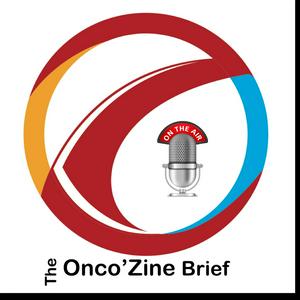
Get the free radio.net app
- Stations and podcasts to bookmark
- Stream via Wi-Fi or Bluetooth
- Supports Carplay & Android Auto
- Many other app features
Get the free radio.net app
- Stations and podcasts to bookmark
- Stream via Wi-Fi or Bluetooth
- Supports Carplay & Android Auto
- Many other app features


The Onco'Zine Brief
Scan code,
download the app,
start listening.
download the app,
start listening.








